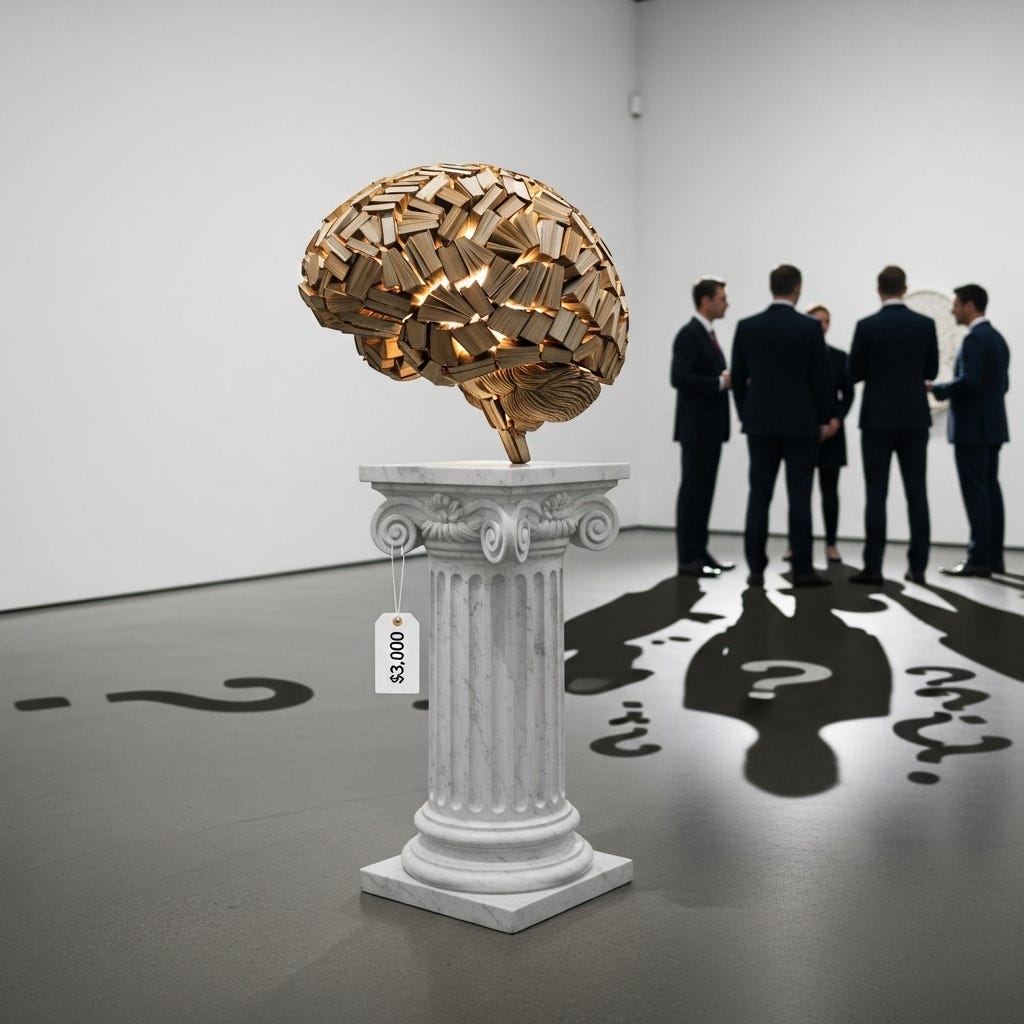The $1.5 Billion Question: What Anthropic's Copyright Settlement Really Means for Creative Work
At $3,000 per book, Anthropic just proved that training AI on human creativity costs less than a month's cloud computing bill
Last Friday, while most of us were wrapping up our workweek, the creative economy shifted on its axis. Anthropic agreed to pay $1.5 billion to settle a copyright lawsuit with authors, marking the largest copyright recovery in U.S. history. At roughly $3,000 per book for half a million works, it sounds like a win for creators.
But here's what keeps me up at night: this settlement might actually be the moment we accepted that human creativity has a price tag, and it's surprisingly affordable.
The Devil in the Legal Details
Federal Judge William Alsup's earlier ruling created a fascinating paradox. He declared that training AI on copyrighted works is "exceedingly transformative" and therefore fair use. Yet he drew the line at piracy, ruling that downloading books from shadow libraries crossed legal boundaries. The message? Buy a used book, scan it, feed it to your AI, and you're golden. Steal the digital file, and you'll pay.
This distinction feels almost quaint in our digital age. It's like saying it's legal to photocopy a library book but illegal to download the same PDF. The end result is identical: an AI system trained on human creativity without ongoing compensation to creators.
What strikes me most is the settlement amount. Anthropic just raised $13 billion at a $183 billion valuation. This settlement represents less than 1% of their valuation, a rounding error in Silicon Valley terms. Meanwhile, after legal fees (typically 30-40% in class actions), authors will receive perhaps $1,800-2,100 per book. For many, that's months or years of work reduced to what amounts to a one-time licensing fee.
Learning from the Music Industry's Hard Lessons
We've seen this movie before. The music industry offers a sobering preview of what happens when technology companies insert themselves between creators and consumers. Spotify pays artists between $0.003 and $0.005 per stream. An artist needs roughly 250,000 streams to earn $1,000.
Now, AI-generated music is flooding these platforms. Bands that don't exist outside of Spotify, with names like "Jet Fuel & Ginger Ales," are racking up millions of plays. Because streaming royalties come from a fixed revenue pool, every AI track that gets played means less money for human artists. The pie doesn't grow; the slices just get thinner.
The parallel to publishing is uncomfortably clear. Today, AI companies need to acquire books (legally) to train their models. Tomorrow, those same models will generate novels, textbooks, and articles that compete directly with human authors. We're not just talking about replacing authors; we're talking about fundamentally changing what authorship means.
The Societal Bargain We're Making
I believe in technological progress. As business leaders, we've seen how AI can transform operations, unlock insights, and accelerate innovation. The benefits to society are real: democratized access to knowledge, breakthrough medical research, and educational tools that adapt to individual learning styles.
But we need to be honest about the trade-offs. We're essentially saying that the collective benefit of AI advancement outweighs individual creative rights. That might be the right call, but it shouldn't be made by default or through legal technicalities.
Consider what this precedent means for your business. If courts decide that any "transformative" use of data is fair game, what happens to your proprietary research, your customer insights, your competitive advantages? The same logic that allows AI to train on books could apply to business documents, strategic plans, or internal communications.
The Path Forward Requires New Thinking
We need frameworks that recognize both the value of human creativity and the potential of AI. Some possibilities worth considering:
First, ongoing royalty structures rather than one-time payments. If AI systems generate revenue from knowledge derived from copyrighted works, shouldn't creators participate in that success?
Second, transparency requirements. Users deserve to know when content is AI-generated, just as investors deserve to be informed about material risks.
Third, new forms of creative protection that go beyond traditional copyright. The fair use doctrine was written in 1976. It's time for an update that reflects digital reality.
The Bottom Line
This settlement isn't really about $1.5 billion or even about books. It's about what kind of future we're building. Are we creating a world where human creativity is just raw material for machines? Or can we find a balance that harnesses AI's power while preserving the incentives and rewards for human innovation?
As executives, we make these trade-offs every day, choosing between efficiency and employment, automation and authenticity. This time, the stakes are higher. We're not just disrupting an industry; we're potentially redefining what it means to create.
The question isn't whether AI will transform creative work, but whether we'll be thoughtful enough to preserve what makes human creativity valuable in the first place.
If you enjoyed this article, please subscribe to my newsletter and share it with your network! Looking for help to really drive the adoption of AI in your organization? Want to use AI to transform your team’s productivity? Reach out to me at: steve@intelligencebyintent.com


